Hello, I’m Michael Zhang, a seasoned Chinese travel enthusiast with extensive international travel experience. I enjoy uncovering the rich history and culture behind every destination I visit and sharing these insights with fellow travelers. Today, I’m thrilled to introduce you to Jingshan Park, one of the best places in Beijing to admire the grandeur of the Forbidden City and immerse yourself in the city’s imperial history. Whether you’re visiting for the first time or seeking a deeper understanding of Beijing’s unique charm, this guide will provide practical tips and inspiration for your journey.
Introduction to Jingshan Park
Jingshan Park, often regarded as the best spot to view the Forbidden City and Beijing’s central axis, is a historical and scenic gem. Located in the heart of Beijing, the park lies directly along the city’s north-south axis. To the south, it faces the Forbidden City’s Shenwu Gate across the street, while to the west, it borders Beihai Park. Jingshan Park served as the imperial garden for the Yuan, Ming, and Qing dynasties. Covering an area of 230,000 square meters, its main hill rises to 94.2 meters above sea level, once the highest point on Beijing’s central axis.
- Address: No. 44, Jingshan West Street, Xicheng District, Beijing
- Opening Hours:
- Peak Season (April 1–October 31): 6:00 AM to 9:00 PM (last entry at 8:30 PM)
- Off-Season (November 1–March 31): 6:30 AM to 8:00 PM (last entry at 7:30 PM)
- Recommended Visit Duration: 2 hours
- Best Time to Visit: Year-round
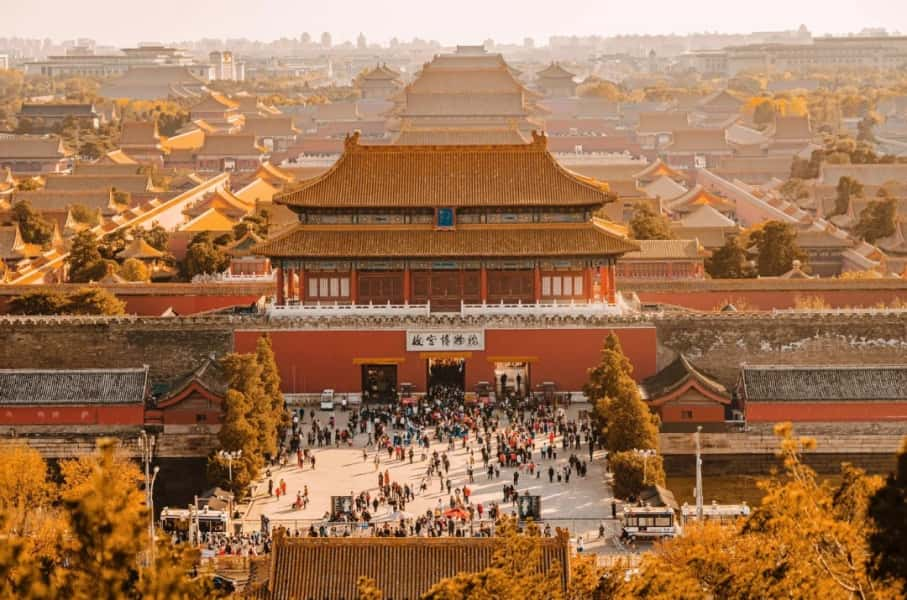
Jingshan Park Map
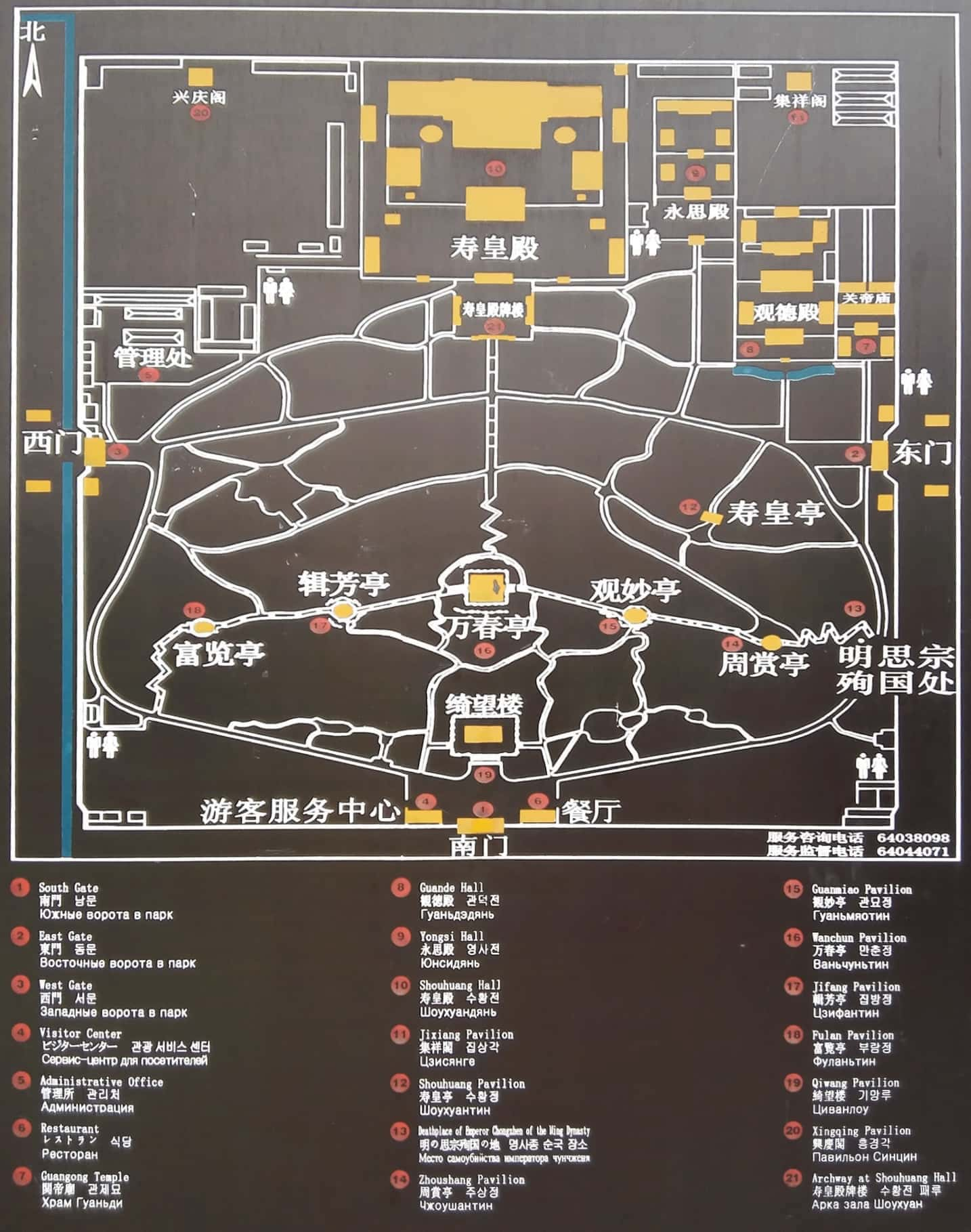
Why You Should Visit Jingshan Park
Stunning Panoramic Views
Jingshan Park offers unparalleled views of the Forbidden City and Beijing’s central axis. From the park’s highest pavilion, Wanchun Pavilion, you can enjoy breathtaking vistas of the entire city. It’s especially magical during sunrise or sunset.
Rich History and Cultural Significance
As the former imperial garden for three dynasties, Jingshan Park has deep historical roots. It was a sacred space where Qing emperors paid tribute to their ancestors. The park is also a cultural hub that reflects the harmonious integration of Confucianism, Taoism, and Buddhism in traditional Chinese society.
A Blend of Nature and Leisure
The park’s serene environment, with its seasonal beauty, makes it a favorite spot for locals and tourists alike. Whether you’re admiring spring’s blooming peonies or winter’s tranquil snow-covered pavilions, Jingshan Park is a perfect retreat in any season. Early mornings and evenings bring the park to life with people exercising, strolling, and enjoying the fresh air.
Things to Do in Jingshan Park
Key Attractions in Jingshan Park
Zhouxiang Pavilion
The Zhouxiang Pavilion is one of the five iconic pavilions in Jingshan Park, built during the 15th year of Emperor Qianlong’s reign (1750). Located opposite the Fulan Pavilion to the west, both pavilions share identical architectural styles and colorful decorations. Zhouxiang Pavilion features a double-eave circular roof with peacock-blue glazed tiles and purple glazed trim. The pavilion stands 11.75 meters tall and covers an area of 76.36 square meters, making it a beautiful spot for enjoying the park’s scenery.
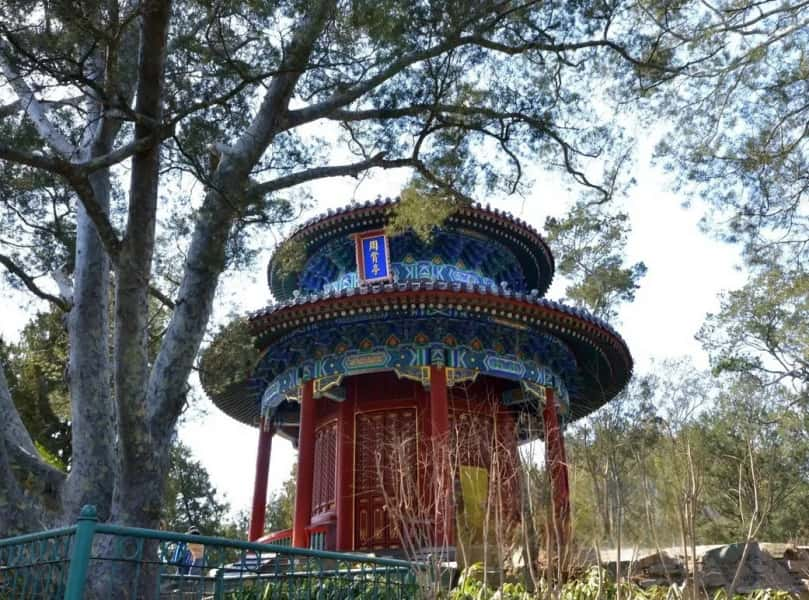
Guanmiao Pavilion
Another one of the five central pavilions, the Guanmiao Pavilion was also constructed in 1750. It stands opposite the Jifang Pavilion to the west, mirroring its structure and design. This pavilion features an octagonal double-eave roof adorned with emerald-green glazed tiles and yellow-glazed trim. With a height of 12.05 meters and a total area of 90.30 square meters, the Guanmiao Pavilion offers breathtaking views of Beijing’s skyline.
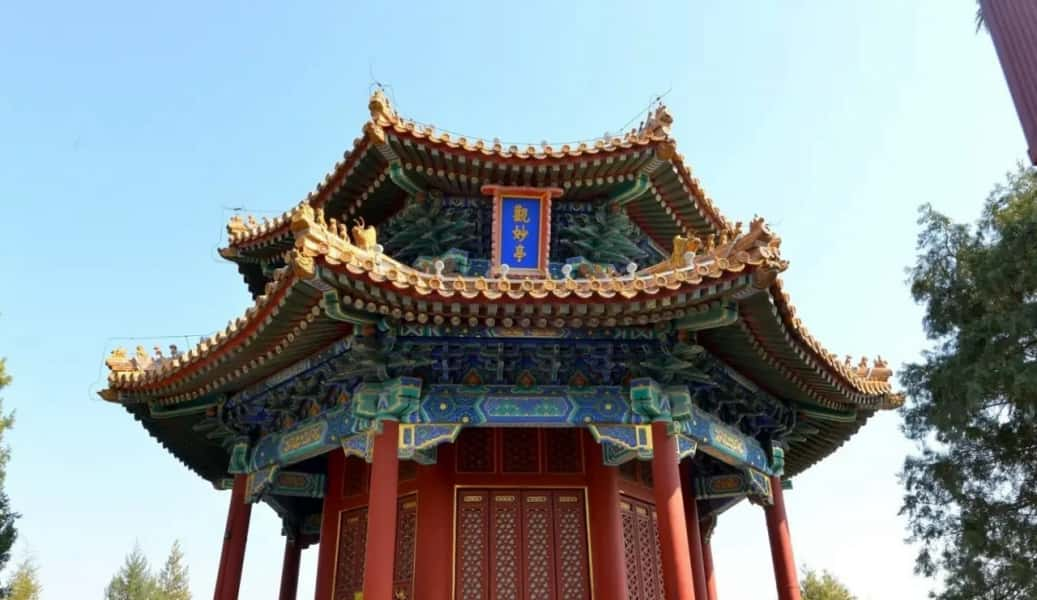
Wanchun Pavilion
As the highest point in Jingshan Park, Wanchun Pavilion serves as a landmark on Beijing’s north-south axis. Built in 1750, it is often called the “crown jewel” of the city’s central axis. This pavilion rises 15.38 meters and features a square layout with a triple-eave roof supported by intricate wooden brackets. The roof is covered with imperial yellow glazed tiles, symbolizing its royal status, and is crowned with a glazed finial. Inside, visitors can find a statue of Vairocana Buddha (Dainichi Nyorai), considered one of the highest representations of royal religious art. Wanchun Pavilion offers panoramic views of the Forbidden City, Beihai Park, and Beijing’s skyline, making it a must-visit spot.
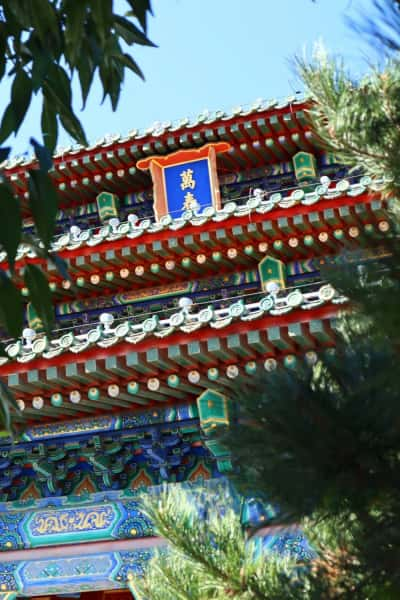
Jifang Pavilion
Located opposite the Guanmiao Pavilion, the Jifang Pavilion is another beautiful octagonal structure built in 1750. It features a double-eave roof with emerald-green glazed tiles and yellow-glazed trim. At 12.05 meters tall and 90.30 square meters in area, this pavilion provides a unique perspective of the park’s surroundings.
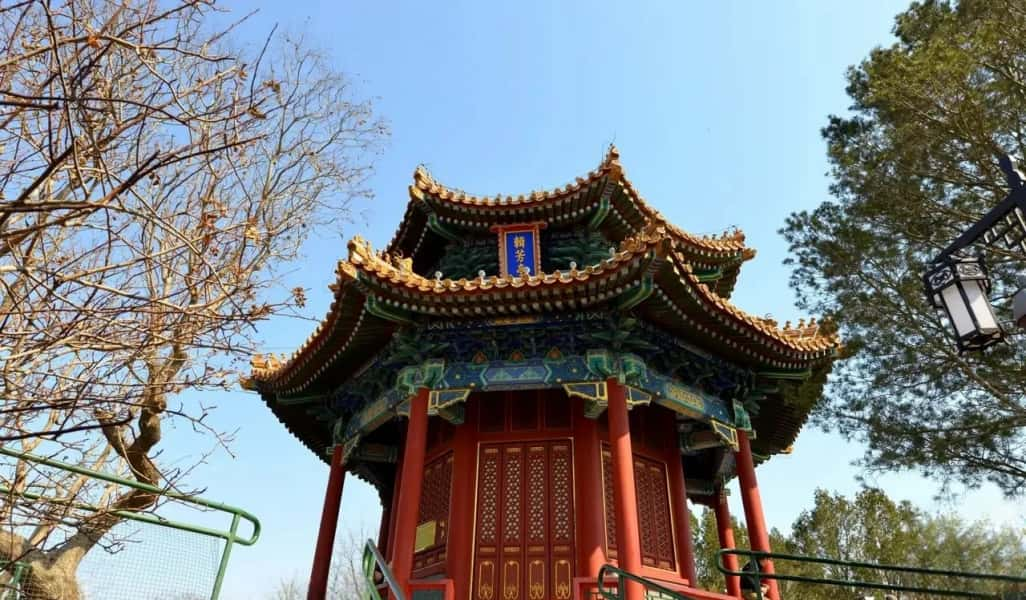
Fulan Pavilion
Fulan Pavilion, built alongside Zhouxiang Pavilion in 1750, shares a similar circular double-eave design. With peacock-blue glazed tiles and purple-glazed trim, it complements its eastern counterpart perfectly. The pavilion is 11.75 meters tall and spans an area of 76.36 square meters, offering a serene environment for reflection and relaxation.
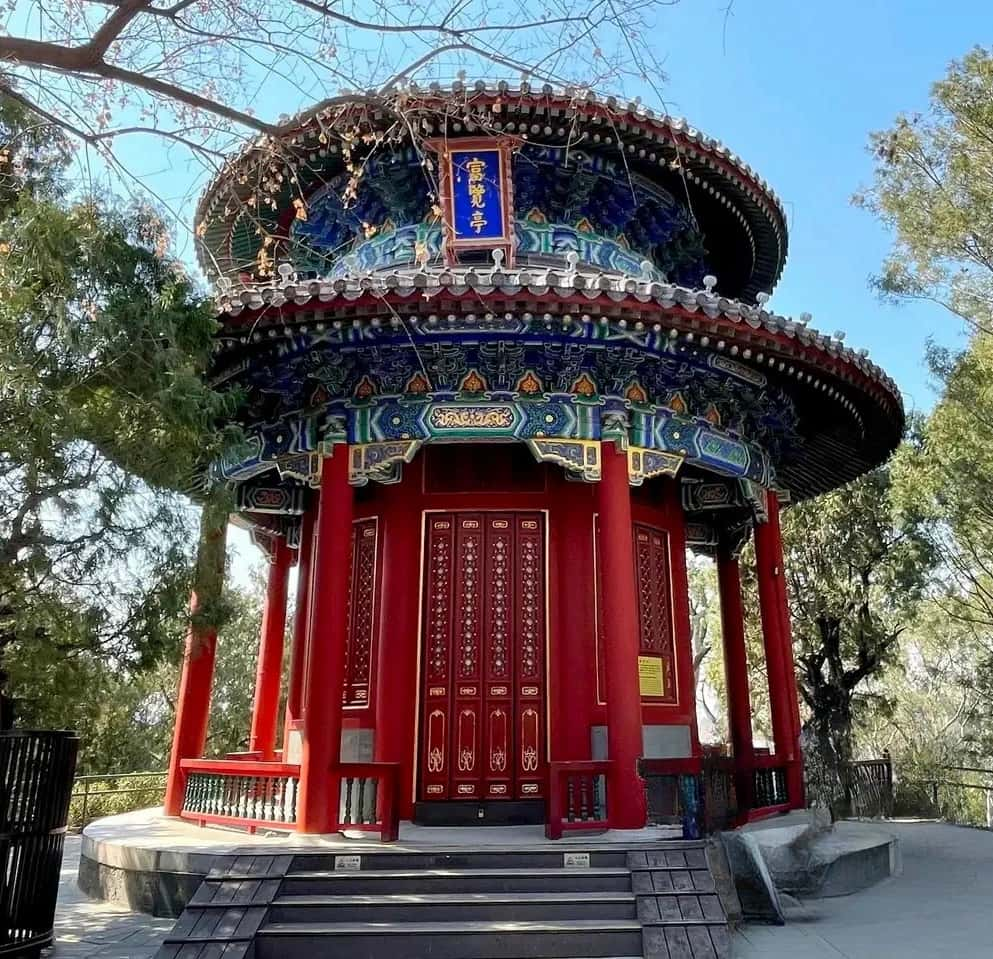
Qiwang Tower
Situated at the base of Jingshan Park’s southern hill, Qiwang Tower was originally the site of a Ming dynasty hall called Shanhou Hall. The emperor often used this location to host lavish banquets for visiting officials, tribal leaders, and envoys. In 1750, the tower was rebuilt as a two-story structure with yellow-glazed tiled roofs, ornate carvings, and vibrant murals. Covering an area of 201.92 square meters, the tower’s name, “Qiwang,” translates to “beautiful views from above.” It remains an excellent spot for taking in the stunning landscapes of Beijing.
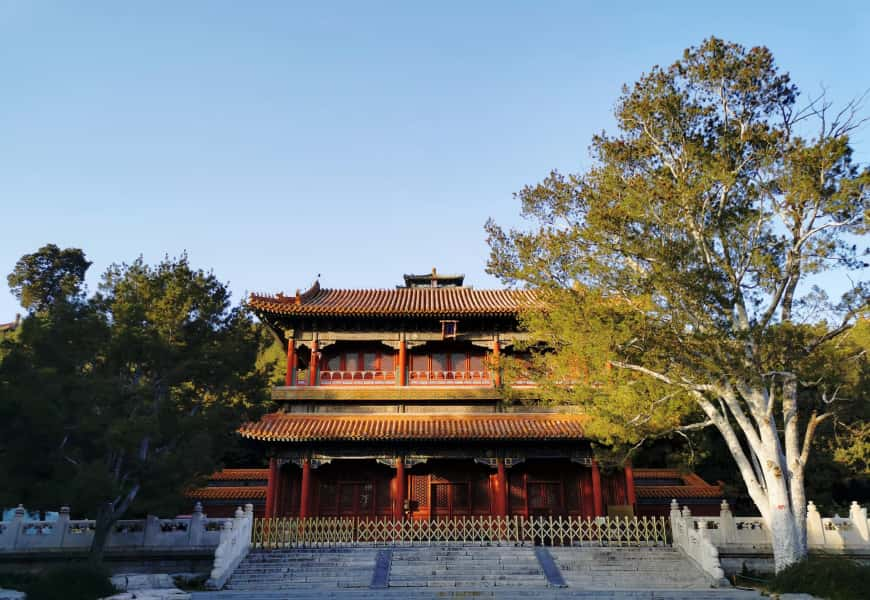
Shouhuang Hall Complex
The Shouhuang Hall Complex, located on Beijing’s central axis within Jingshan Park, was originally built during the Ming dynasty. Reconstructed in 1749, it became a vital site for royal ancestor worship during the Qing dynasty. The hall once housed portraits and memorial tablets of emperors and empresses from Kangxi to Guangxu. The royal family conducted important ceremonies here during New Year, festivals, and significant anniversaries. This complex is the only major Qing dynasty structure added to Beijing’s central axis.
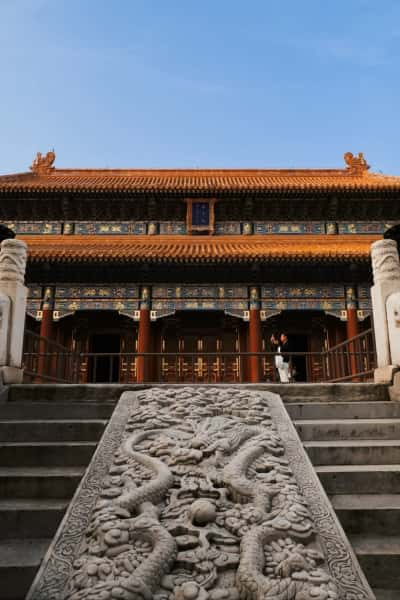
Huguo Zhongyi Temple
Also known as the Guandi Temple, this site honors Guan Yu, a famous Chinese general known for his loyalty and bravery, as well as Zhenwu, the Daoist deity of the north. The temple consists of two courtyards with the main hall featuring yellow-glazed tiles and exquisite dragon and phoenix motifs. The plaque inscribed with the characters for “Loyalty and Righteousness” is said to be Emperor Kangxi’s personal handwriting, adding to the temple’s historical significance.
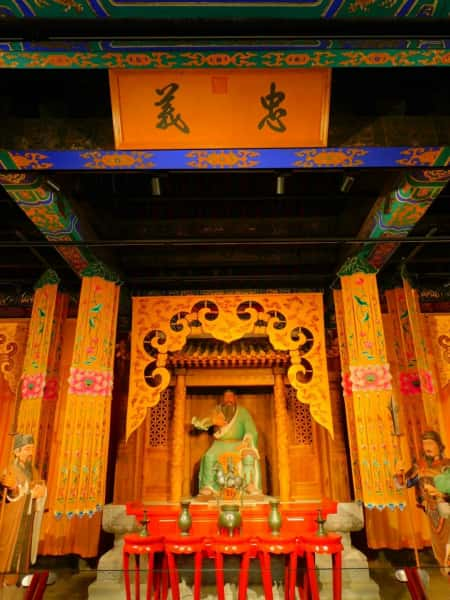
Guande Hall
Originally constructed during the Wanli era of the Ming dynasty, Guande Hall was used by emperors to observe their sons and officials practicing archery. In 1748, Emperor Qianlong renovated the hall to house the remains of Empress Xiaoxian after her death. Since then, it became the royal funeral hall, serving as the temporary resting place for deceased emperors and empresses before their burial. Adjacent to the hall, Yongsi Hall was built as a temporary workspace for the emperor during mourning periods.
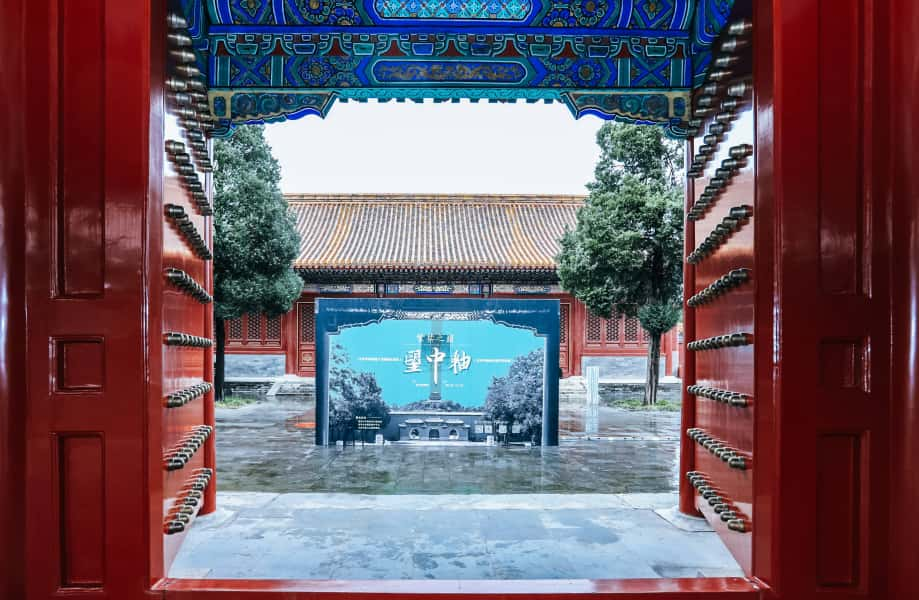
Cultural Legends of Jingshan Park
The Legend of the Dragon Cypress
During the Jiajing era of the Ming dynasty, a unique lion cat named “Shuangmei” lived in the imperial palace. This cat had a special coat with a white mark between its eyes, and it was said to be exceptionally intelligent. Shuangmei could understand and respond to the emperor’s commands, staying by his side even during rest, earning the emperor’s deep affection. After the cat passed away, Emperor Jiajing mourned its death and ordered a eulogy to be written by court scholar Yuan Wei. The eulogy included the phrase “transforming the lion into a dragon,” which the emperor praised highly. To honor the beloved cat, the emperor arranged for it to be buried near an ancient tree on the northern slope of Jingshan Park, with a memorial stone engraved with the words “Dragon’s Tomb” to commemorate the feline companion.
The Tragic Story of Emperor Chongzhen
On the eastern slope of Jingshan Park lies an ancient crooked scholar tree, marking the site of one of the most somber events in Chinese history. In 1644, during the final year of the Ming dynasty, Emperor Chongzhen faced insurmountable challenges as rebel forces led by Li Zicheng advanced on Beijing with an army of 400,000. On the 19th day of the third lunar month, realizing the situation was hopeless, the emperor drank several cups of wine in despair. He first sent the crown prince out of the city to safety, then forced the empress and consorts to take their own lives, and tragically killed two of his daughters. Finally, he fled the Forbidden City through the Shenwu Gate and climbed Jingshan Park. In utter despair over the fall of his empire, the 33-year-old emperor hung himself from the crooked scholar tree, ending the Ming dynasty and leaving a legacy of sorrow and reflection for future generations.
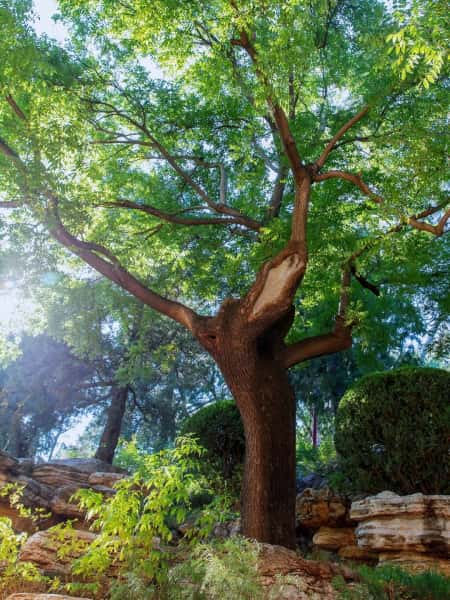
Jingshan Park Ticket Information
Ticket Prices
- Adults: 2 RMB
- Children: 1 RMB (ages 6–18)
- Students: 1 RMB (for full-time university and below)
- Seniors (60+ years): 1 RMB
- Free Entry: Children under 1.2 meters or 6 years old
Note: Ticket prices may increase to 10 RMB during temporary exhibitions.
How to Purchase Tickets
- Online: Through the official Jingshan Park WeChat account or popular travel platforms.
- In Person: Tickets are available at the park’s ticket counters.
Operating Hours
- Park Hours:
- Peak Season (April 1–October 31): Opens at 6:00 AM, last entry at 8:30 PM, closes at 9:00 PM.
- Off-Season (November 1–March 31): Opens at 6:30 AM, last entry at 7:30 PM, closes at 8:00 PM.
- Cultural Sites: (Shouhuang Hall, Guande Hall, and Guandi Temple)
- Peak Season: 8:00 AM to 6:00 PM (last entry at 5:30 PM). Closed on Mondays.
- Off-Season: 8:30 AM to 5:00 PM (last entry at 4:30 PM). Closed on Mondays.
Guided Tours in Jingshan Park
Jingshan Park does not offer official guided tours since most visitors come to enjoy the scenery and take photos. However, if you are interested in learning more about its history and cultural significance, combining a tour of the Forbidden City and Jingshan Park with a professional guide is highly recommended. Many local guides offer packages that cover both sites, providing insights into their historical and architectural connections.
Recommended Routes for Exploring Jingshan Park
If you’re planning to visit Jingshan Park, pairing it with a tour of the Forbidden City creates an unforgettable experience. Below are three suggested routes to make the most of your time:
Route 1: Classic Southern Entry
- Start: Enter through the South Gate.
- Visit Chongzhen’s Memorial Site (Emperor Chongzhen’s Hanging Tree).
- Walk up the eastern side of the hill to Wanchun Pavilion (the summit).
- Descend via the western side path.
- Explore the Shouhuang Hall Complex.
- End: Exit through the East Gate.
Route 2: Comprehensive West Entry
- Start: Enter through the West Gate.
- Follow the main path to visit Chongzhen’s Memorial Site.
- Ascend the eastern hillside to Zhouxiang Pavilion.
- Continue to Guanmiao Pavilion, then reach the summit at Wanchun Pavilion.
- Descend through Jifang Pavilion and Fulan Pavilion.
- Explore the Shouhuang Hall Complex.
- End: Exit through the East Gate.
Route 3: East-to-West Exploration
- Start: Enter through the East Gate.
- Visit Chongzhen’s Memorial Site.
- Climb the eastern hill path to Zhouxiang Pavilion.
- Continue through Guanmiao Pavilion, Wanchun Pavilion, Jifang Pavilion, and Fulan Pavilion.
- Descend on the western path.
- Explore the Shouhuang Hall Complex.
- End: Exit through the West Gate.
Best Photography Spots in Jingshan Park
Jingshan Park offers incredible photography opportunities, showcasing both the city’s ancient charm and modern vibrancy. Here are the must-visit photo spots:
- Guanmiao Pavilion: Capture a panoramic view of Beijing’s modern Central Business District (CBD), a stark contrast to the park’s historical atmosphere.
- Wanchun Pavilion (Summit): Look south for a stunning full view of the Forbidden City, north to admire Beijing’s central axis, west for the serene White Pagoda Temple, and east for the modern architecture of Wangjing SOHO.
- Jifang Pavilion: Provides a unique angle to capture the peaceful and solemn beauty of the White Pagoda Temple.
- Shouhuang Hall: Offers an ideal perspective for photographing Jingshan Hill with its grand imperial garden architecture.
- Chongzhen’s Memorial Site: A somber yet historical location to connect with the dramatic end of the Ming Dynasty.
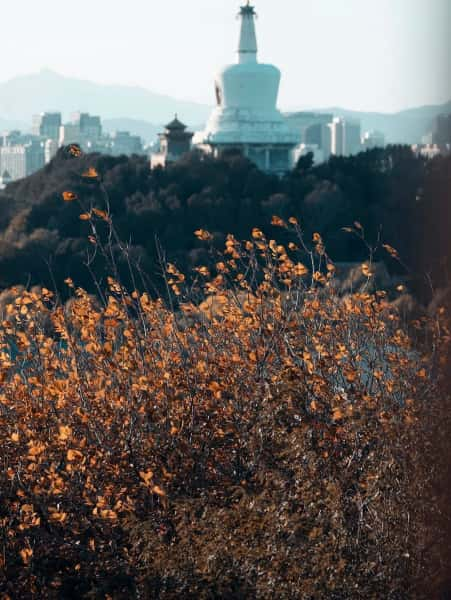
How to Get to Jingshan Park from Downtown Beijing
By Subway
Take Line 6 or Line 8 to Nanluoguxiang Station, and then walk to Jingshan Park. The walk is short and straightforward, making this a convenient option for most visitors.
By Bus
- South Gate: Take Bus 101, 103, 109, 124 (trolley), or Bus 58, and get off at Shenwu Gate Station. Walk approximately 150 meters to the South Gate.
- East Gate: Take Bus 111, 124 (trolley), or Bus 58, and get off at Jingshan East Gate Station. Walk about 120 meters north to the East Gate.
- West Gate: Take Bus 5 or 58, and get off at Xibanqiao Station. From there, it’s only a 50-meter walk to the West Gate.
By Taxi or Ride-Hailing Apps
Taking a taxi or ride-hailing service from downtown Beijing is convenient and takes about 20 minutes. The fare is typically around 30 RMB, depending on your exact starting point and traffic conditions.
How to Get to Jingshan Park from the Forbidden City
The Forbidden City and Jingshan Park are adjacent, making it easy to walk between the two landmarks.
- From Shenwu Gate (North Gate) of the Forbidden City: Jingshan Park’s South Gate is just across the street. Exit the Forbidden City through Shenwu Gate, then walk north for about 100 meters to reach the South Gate entrance of Jingshan Park.
- Recommended Route: Use the underground pedestrian passage across the north-south axis road to safely cross to Jingshan Park’s entrance. This prevents the need to cross busy roads directly and ensures a smoother transition.
FAQ
Is Jingshan Park stroller-friendly?
Yes, Jingshan Park is suitable for families with strollers. Additionally, the visitor service center offers amenities such as nursing rooms, water dispensers, wheelchairs, and sewing kits for convenience.
Is there luggage storage available?
There are no official luggage storage facilities inside Jingshan Park. However, small shops near the park often provide luggage storage services at an affordable price, typically ranging from 5 to 10 RMB per item.

 English (Hong Kong)
English (Hong Kong)
 English (US)
English (US)  English (Malaysia)
English (Malaysia)  English (Singapore)
English (Singapore)  繁體中文
繁體中文 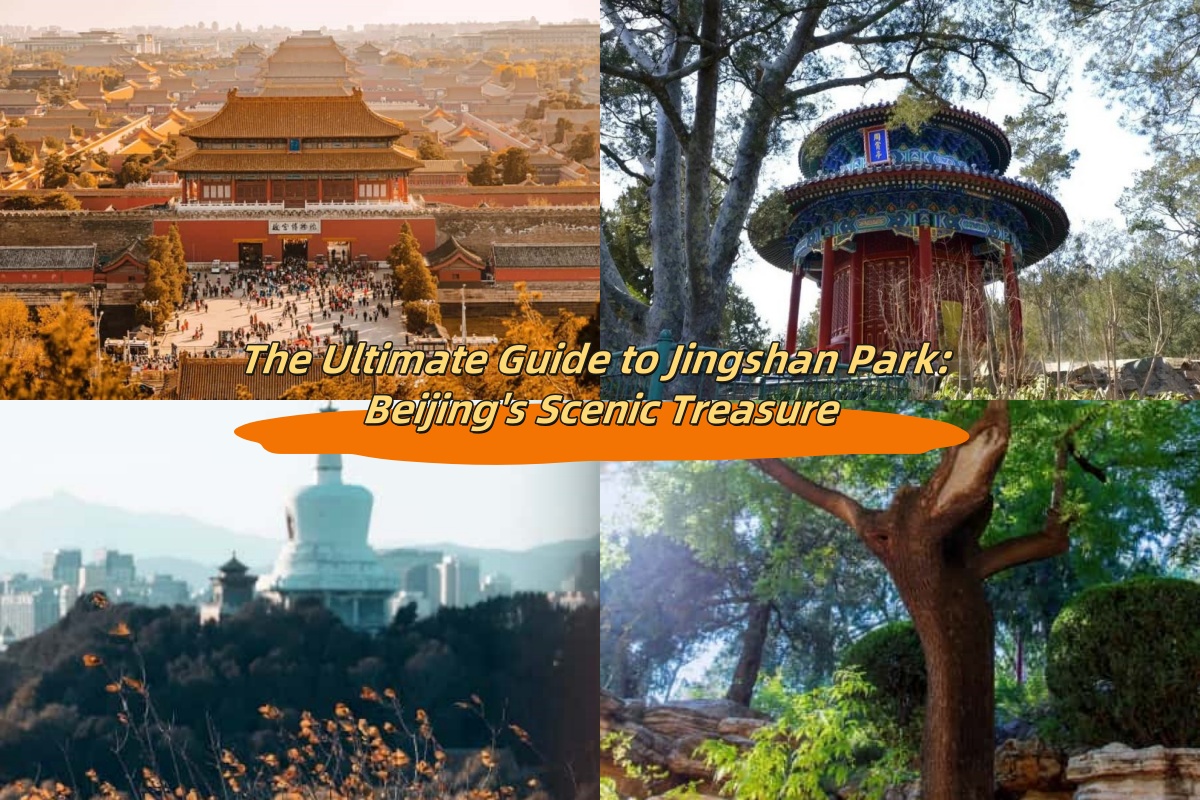
Comment (0)